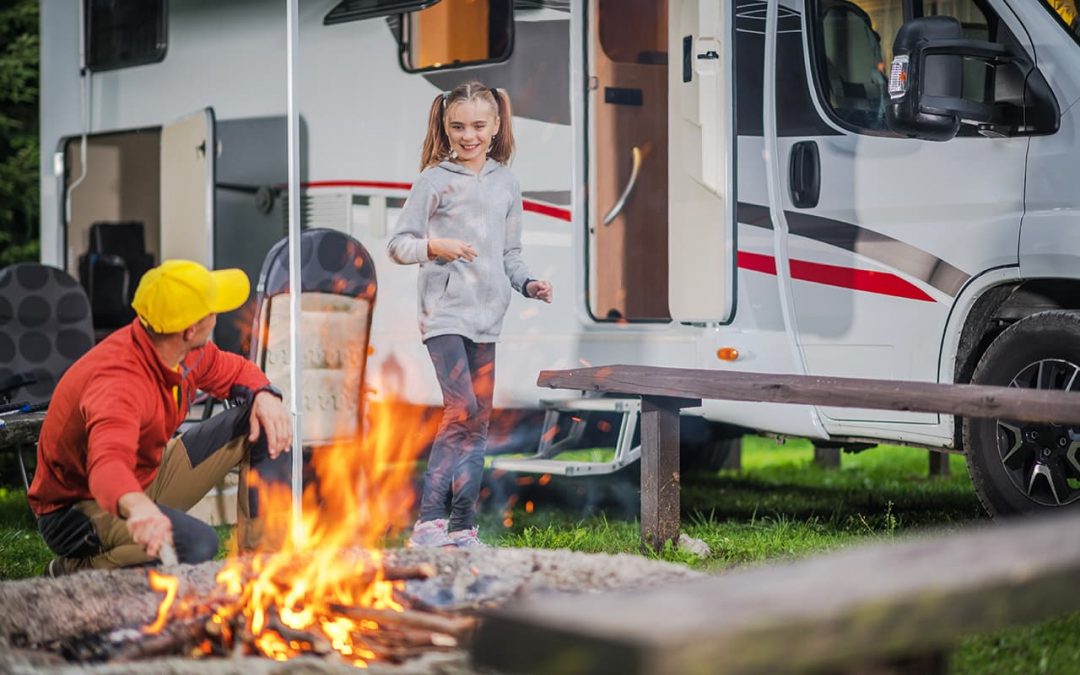The price can surge up to millions, but according to Camper Report, the average cost of a recreational vehicle (RV) is about $300,000. A moderately-appointed camper trailer pulled behind a truck might cost $20,000, while a fifth-wheel may be $40,000. Most motorhome prices usually start around $100,000.
You’d think for those kinds of prices, you shouldn’t have to fork out more money for accessories. While some people refer to an RV as a “house on wheels” it’s not an all-inclusive deal. You’ll have to outfit it with accessories, and here are some of the most popular – based on usefulness.
Beyond the Basics
Enjoying life in your RV is a somewhat glamorous version of camping, which is why it’s often called “glamping.” And while it traditionally may have been looked at as an activity for adults in their retirement years, Millennials have taken to the RV life in a big way.
According to the 2019 North American Camping Report, the percentage of people who camp at least three times per year has increased by 72 percent since 2014. The majority of those people are new to the activity. Millennials made up 56 percent of new campers last year. So it’s no surprise that high tech accessories offering things like Internet connectivity have become popular at RV supply stores.
Surge protector and EMS: They’re not cheap, but far less expensive than paying for the repair to damage to your RV’s electrical system. These oversized surge protectors have sophisticated electrical management system (EMS) components in them. They go beyond just protecting against power surges. They’ll also shut off power to your RV when AC power is excessive or insufficient. The device also protects against reverse polarity, open neutral, open ground, or when 240 volts is detected on a 120-volt outlet.
Don’t skimp on sewer hose: It’s likely that your camper or RV will come with this accessory, but it’s more likely that you’ll want a longer stretch. Otherwise, you’ll have difficulty connecting to the campground sewer system – or you won’t be able to park your RV where you want it. And it’s sort of gross to talk about, but opt for clear sewer connector elbows. You’ll appreciate being able to see that the tanks have been completely dumped and cleaned that way. Disposable gloves are also a good idea. Buy them by the case.
Walkie talkies: Class A motorhomes average around 33 feet in length. Some of them are up to 45 feet long. They can be of an average height of around 10 feet high. Your choice is to get used to shouting or invest in a pair of walkie talkies. It’s a better option than your smartphones, which might seem more logical – until you remember that you might not always have cellular service.
Instant Pot: Even the high end RVs can leave you wanting more out of the kitchen and cooking experience. One Instant Pot cooker can take the place of a collection of pots and pans. This is one of the most practical gadgets you can get for your RV experience.
RV Storage
The RV experience has many hidden expenses, so be sure to do your homework before making a purchase commitment. One of the biggest expenses (besides buying one) is associated with storage. Current statistics show that rates start around $50 to $125 or more. If you want to have your RV protected from the winter, heated RV storage can cost anywhere from $100 to $450 a month.
A better and more cost-efficient alternative in the long run is to keep your new RV or camper on your own property in a metal and steel RV or marine storage building. Our prefab steel building kits can be built quickly and affordably. Invest the money into something you own, instead of throwing it away on RV parking fees or rent for an off-site storage facility. Check out our gallery.



